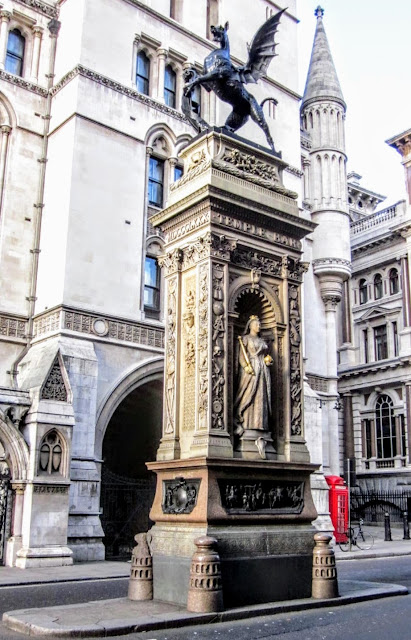 |
| The only surviving gateway to the City of London. |
It was a particularly cold Saturday morning, with a persistent drizzle, as I wandered around the City of London.
The streets were emptier than normal, even for a weekend, as I made my way down past Barbican to Postman's Park and onward towards St. Paul's Cathedral.
As I entered Paternoster Square, which was deserted, I found this stone gateway. The rain and diffused light seemed against me getting a decent photograph, but I persevered and ended up with the image above.
It is a remarkable gateway with an intriguing past. I will endeavour to visit the area, again, in the hopes of getting some better shots.
It is a remarkable gateway with an intriguing past. I will endeavour to visit the area, again, in the hopes of getting some better shots.
Brief History
Originally, Temple Bar Gate was situated at the meeting of Strand and Fleet Street, and was the ceremonial entrance to the City of London from the City of Westminster.
The first mention of Temple Bar (a barrier of sorts) is in 1293, which basically consisted of two wooden poles with a chain hung between them. By the mid 14th century a wooden archway had replaced the posts and Temple Bar Gate was properly born. At one point a prison was housed in the upper level.
The gateway survived the Great Fire of 1666 but, with much damage to the surrounding area, King Charles II decided to have the gateway rebuilt in Portland Stone.
Sir Christopher Wren is attributed as designing the new gateway, but no historic documents exist to verify this. Work began in 1669 and was completed in 1672. A third of the budget was spent on four regal statues that would adorn the gate. The statues were of Queen Anne of Denmark and James I (east) and Charles I and Charles II (west).
Temple Bar Gate although well constructed, would become a place of much derision over the years, as it did nothing for the area but clog the roads, as more horse and cart took to the road.
By 1874 it was noticed that the arches had dropped, due to the slipping of the keystones, and had to be supported by timber.
In 1878 the City of London Corporation, wanting to widen the roads, but not wanting to destroy the landmark, dismantled the building, over an eleven-day period. The stones were numbered and stored near Farringdon.
In 1880 the gateway was purchased by Henry Meux and transported to his property, Theobalds Park, Cheshunt, where it was rebuilt. Although Theobalds Park was sold to Middlesex County Council, in 1938, the Temple Bar Gate was excluded from the sale, remaining with the Meux trustees.
 |
| A newspaper cutting. |
The Temple Bar Trust purchased the gateway, in 1984, for £1.
In 2001, funding began to help return the historic gateway to London. In October 2003 the first stone was dismantled, at Theobalds Park, and the gateway made its way, slowly, back to the City.
The Temple Bar Gate officially opened to the public in November 2004, and now forms the entrance to the Paternoster Square redevelopment, just north of St. Paul's Cathedral.
 |
| Temple Bar Memorial |
Where Wren's Temple Bar originally stood, a memorial, designed by Architect and Surveyor to the City of London Horace Jones, was erected in 1880.
No comments:
Post a Comment